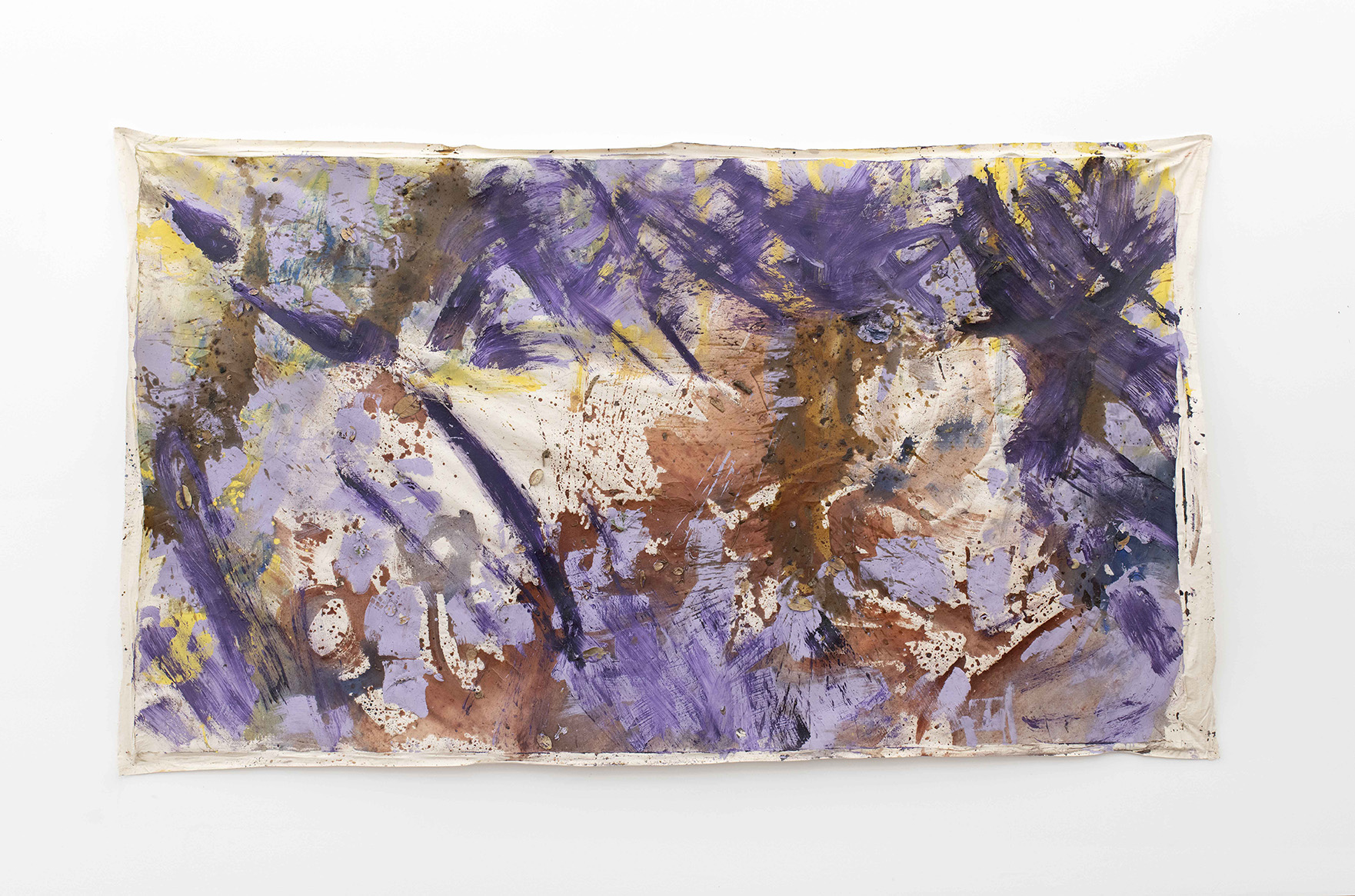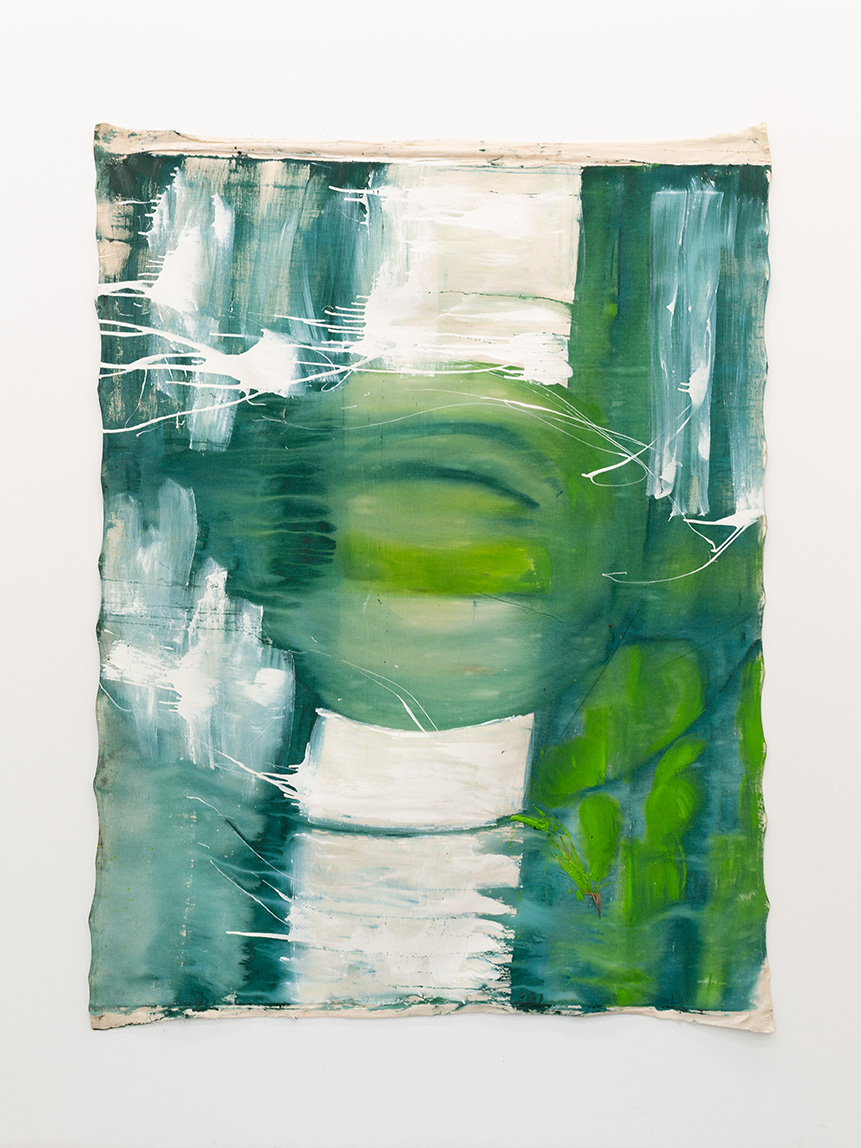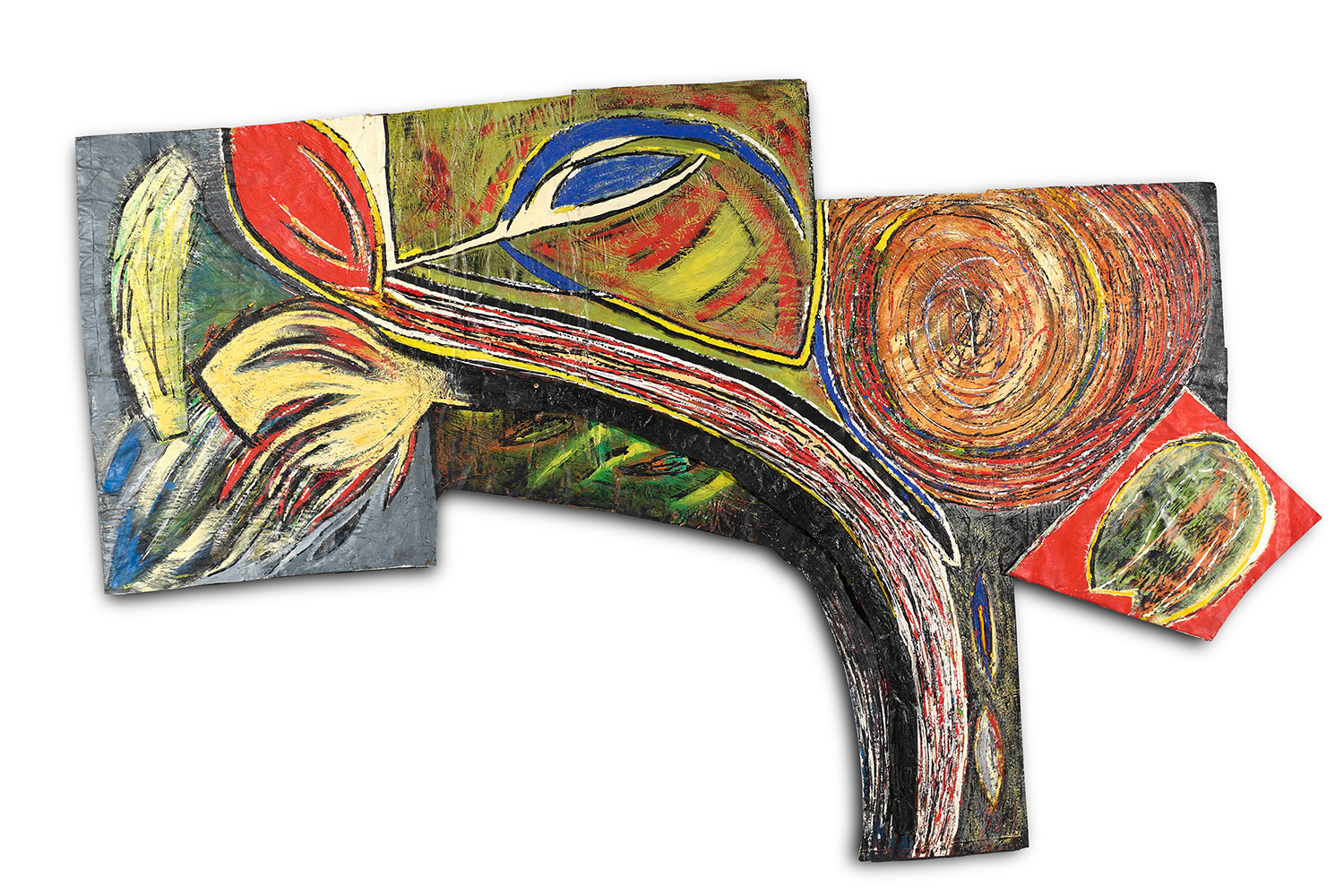Descended from a line of women artists, Vivian Suter was born in Argentina to a Swiss father and an Austrian mother. The family moved to Switzerland when she was thirteen. It was there that she studied painting at the School of Arts and Crafts, and started exhibiting regularly. In 1982, she travelled in North and Central America before permanently settling in Panajachel, Guatemala, in a forest on the shore of Lake Atitlán, far away from contemporary art’s usual circuits. This move coincided with a new direction in her art, which had previously been conceptual.
From that point on, she engaged in studio work, creating large, expressive paintings rendered in thick layers on paper that had been cut up and assembled into collages. She later painted on monumental canvases that were eventually relieved of stretchers. They were often hung from the ceiling, and were sometimes superimposed, or even laid on the floor, offering an immersive experience, maybe as dense as the experience of the forest. As she once explained: “My state of mind is like a meditation. I have an osmotic relationship with nature”. The subtropical atmosphere and climate, the vegetation and animals that inhabit them, became new themes of her works.
In 2010, Tropical Storm Agatha plunged her studio stock into the mud, leading to her decision to leave traces of chance and bad weather on her works, like humidity, rain, scents, and earthy tones. Added to these were light, flora and fauna, as constituent elements of the Guatemala landscape: “It was a turning point, because I accepted that my paintings hadn’t been destroyed, but transformed. They incorporated an experience. After that, I decided to stop fighting against nature, and work with it instead.”
When her work was shown at the Athens leg of documenta 14 in 2017, it found its way back into large exhibitions sites and prestigious museum collections. Since then, her work has been presented all over the world, and in 2021, Suter was awarded Switzerland’s most important art prize, the Prix Meret Oppenheim.
From that point on, she engaged in studio work, creating large, expressive paintings rendered in thick layers on paper that had been cut up and assembled into collages. She later painted on monumental canvases that were eventually relieved of stretchers. They were often hung from the ceiling, and were sometimes superimposed, or even laid on the floor, offering an immersive experience, maybe as dense as the experience of the forest. As she once explained: “My state of mind is like a meditation. I have an osmotic relationship with nature”. The subtropical atmosphere and climate, the vegetation and animals that inhabit them, became new themes of her works.
In 2010, Tropical Storm Agatha plunged her studio stock into the mud, leading to her decision to leave traces of chance and bad weather on her works, like humidity, rain, scents, and earthy tones. Added to these were light, flora and fauna, as constituent elements of the Guatemala landscape: “It was a turning point, because I accepted that my paintings hadn’t been destroyed, but transformed. They incorporated an experience. After that, I decided to stop fighting against nature, and work with it instead.”
When her work was shown at the Athens leg of documenta 14 in 2017, it found its way back into large exhibitions sites and prestigious museum collections. Since then, her work has been presented all over the world, and in 2021, Suter was awarded Switzerland’s most important art prize, the Prix Meret Oppenheim.


